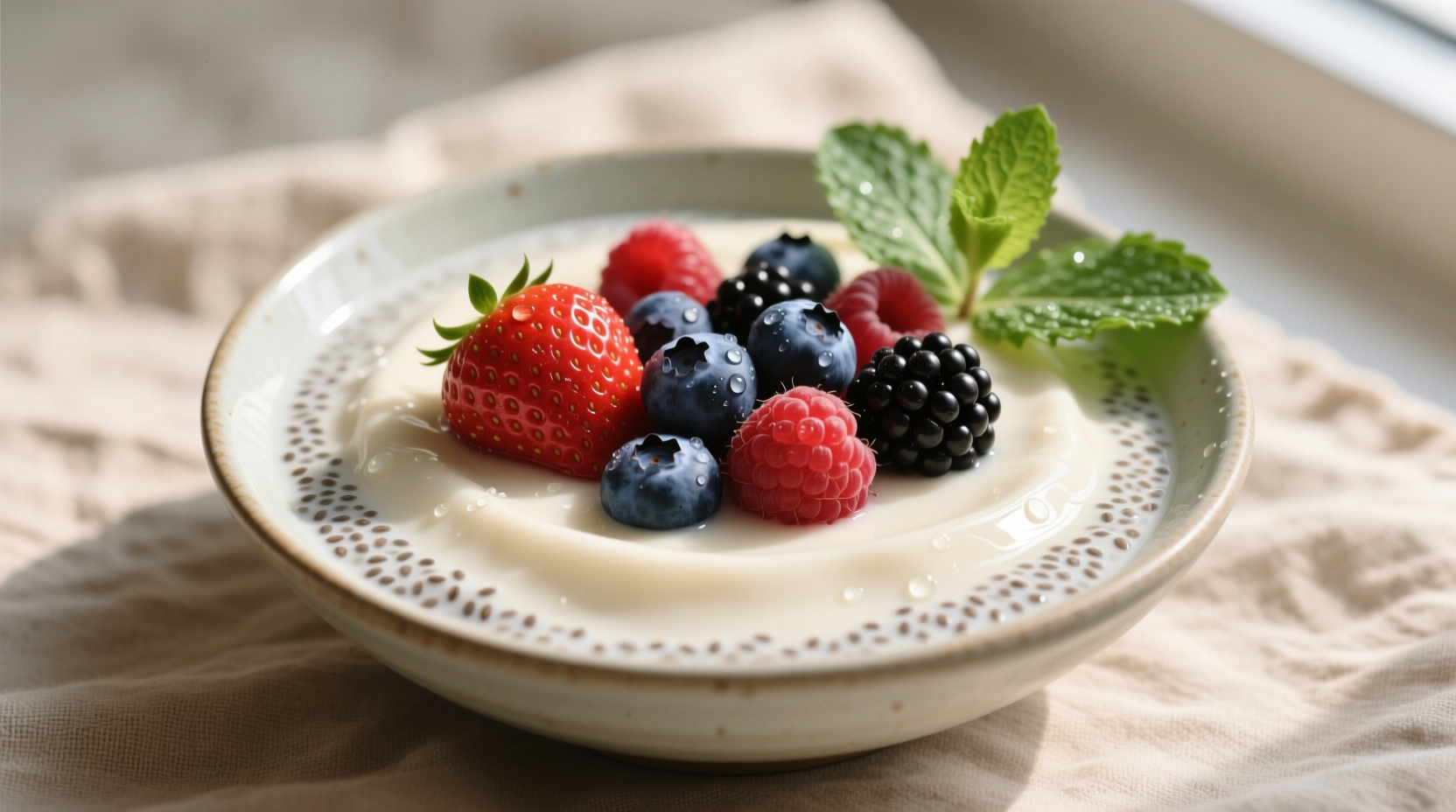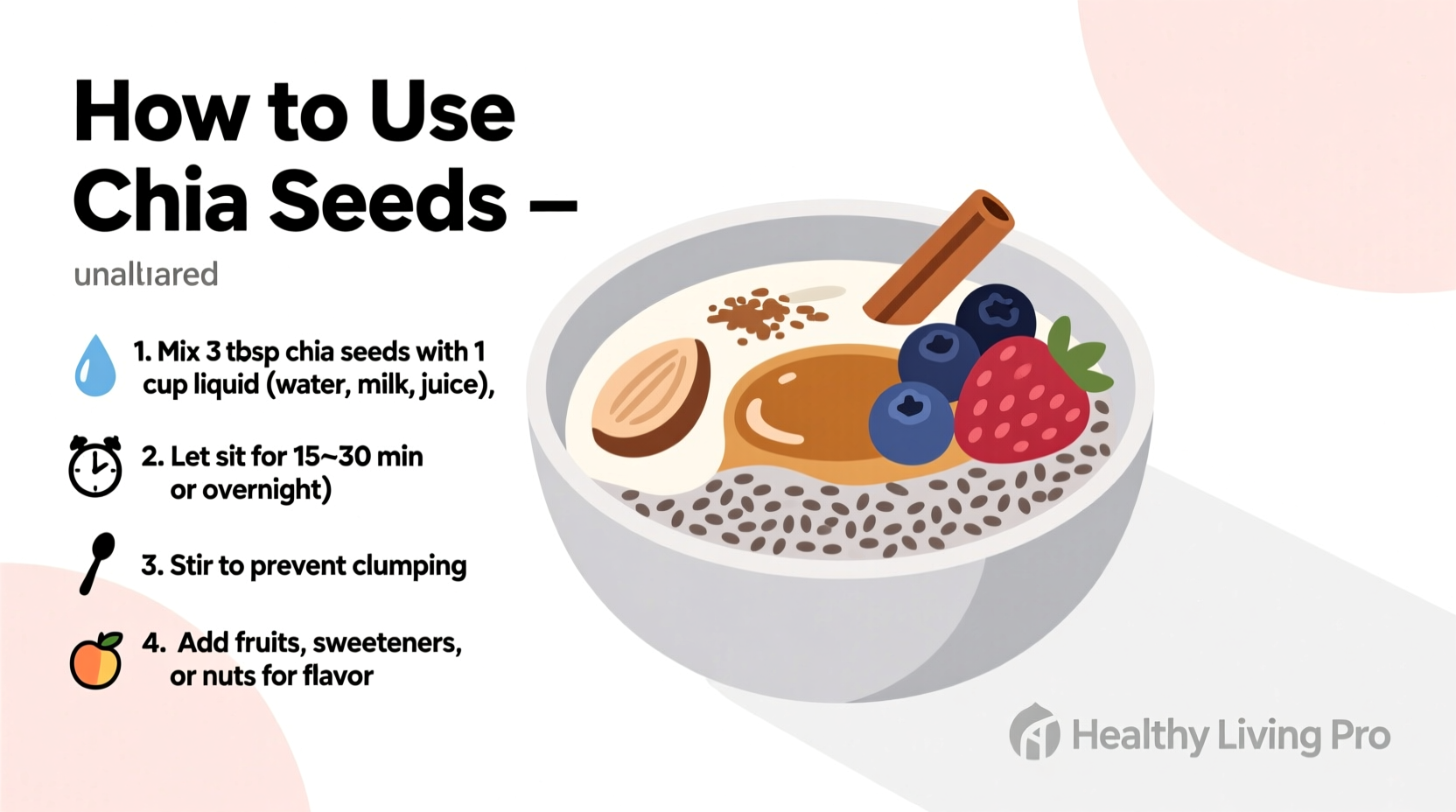Chia seeds transform from tiny dry granules into nutrient-rich gels with simple preparation. The most effective method involves mixing one part chia seeds with four parts liquid and allowing 15-20 minutes for complete hydration. This basic ratio creates the foundation for countless culinary applications while maximizing nutritional absorption.
Mastering Chia Seed Hydration Fundamentals
Proper hydration unlocks chia seeds' full potential. Unlike flaxseeds, chia seeds don't require grinding to access their omega-3s, but hydration significantly improves digestibility. The ideal water-to-seed ratio varies by application:
| Application | Chia:Water Ratio | Rest Time | Texture Result |
|---|---|---|---|
| Basic hydration | 1:4 | 15-20 min | Light gel |
| Thick pudding | 1:3 | 2+ hours | Pudding consistency |
| Baking binder | 1:5 | 10 min | Egg substitute |
| Smoothie thickener | 1:6 | 5 min | Light viscosity |
This hydration science comes from agricultural research at the University of Saskatchewan's Crop Development Centre, which has studied chia seed properties extensively. Their findings confirm that proper hydration increases soluble fiber availability by 30% compared to dry consumption.
Breakfast Applications That Deliver Sustained Energy
Start your morning with chia seed pudding using this simple formula: combine 3 tablespoons chia seeds with 1 cup unsweetened almond milk, 1 teaspoon vanilla extract, and optional natural sweetener. Stir thoroughly and refrigerate overnight. The resulting pudding provides 10 grams of fiber and 5 grams of complete protein per serving.
For smoothie enthusiasts, add pre-soaked chia gel instead of dry seeds. This prevents the unpleasant gritty texture that occurs when blending dry chia seeds. The USDA's FoodData Central confirms that one ounce (28 grams) of chia seeds contains 11 grams of fiber, 4.4 grams of omega-3s, and 4.7 grams of protein - making them a nutritional powerhouse for morning meals.

Revolutionize Baking with Simple Substitutions
Replace eggs in baking with chia gel using a straightforward conversion: one "chia egg" equals 1 tablespoon chia seeds mixed with 2.5 tablespoons water, rested for 10 minutes. This works exceptionally well in muffins, cookies, and quick breads. Professional bakers at the Culinary Institute of America have documented that chia gel maintains structure while adding moisture retention properties that extend freshness by up to 40%.
When incorporating chia seeds directly into dry baking ingredients, limit to 10% of total flour weight. Exceeding this threshold can create excessive density. For bread recipes, add pre-soaked chia seeds during the final kneading stage to preserve their nutritional integrity while enhancing moisture retention.
Hydration Enhancement Techniques for Active Lifestyles
Create naturally electrolyte-rich beverages by combining chia seeds with coconut water. The traditional Mexican aguas frescas method involves adding 2 tablespoons chia seeds to 4 cups liquid, allowing them to hydrate fully before consumption. This ancient technique, documented in anthropological studies of pre-Columbian Mesoamerican cultures, creates a sustained hydration effect that outperforms plain water.
For athletes, the International Society of Sports Nutrition recognizes chia seeds' ability to maintain hydration status during prolonged activity. Their hydrophilic properties allow chia gel to slowly release water into the digestive system, providing extended hydration benefits during endurance activities.
Critical Usage Considerations and Limitations
While chia seeds offer remarkable versatility, certain limitations require attention. Consuming dry chia seeds with insufficient liquid can cause esophageal constriction, as documented in case reports published in the Annals of Internal Medicine. Always hydrate chia seeds before consumption or ensure adequate fluid intake when using them dry.
Daily consumption should remain under 2 ounces (56 grams) for most adults. Excessive intake may interfere with blood thinning medications due to chia's natural anticoagulant properties. The European Food Safety Authority has established 50 grams per day as the safe upper limit for healthy adults without medication interactions.
Storage matters significantly for maintaining chia seed quality. Keep them in airtight containers away from light and heat. Properly stored chia seeds maintain nutritional value for 2-4 years, according to research from the Journal of Food Composition and Analysis. Refrigeration extends shelf life but isn't required for short-term storage.
Practical Daily Integration Strategies
Begin with small applications to develop your chia usage routine. Sprinkle dry seeds on yogurt for immediate texture contrast, or mix pre-soaked gel into salad dressings for natural thickening. Professional chefs recommend keeping pre-made chia gel in your refrigerator for instant use in sauces, soups, and baked goods.
For meal prep efficiency, prepare a chia seed hydration base on Sunday that lasts through Wednesday. This simple practice ensures you always have chia gel available for smoothies, sauces, or quick breakfast puddings during busy weekdays. The time investment required for proper chia seed preparation has decreased significantly since traditional preparation methods, evolving from hours of soaking to today's 15-minute standard.











 浙公网安备
33010002000092号
浙公网安备
33010002000092号 浙B2-20120091-4
浙B2-20120091-4